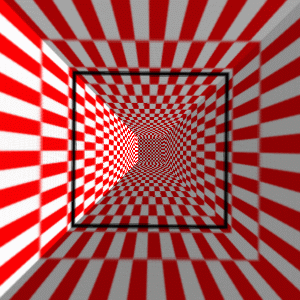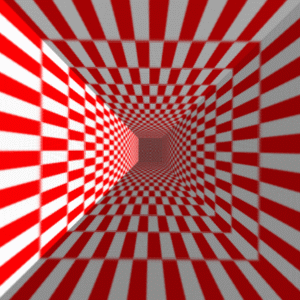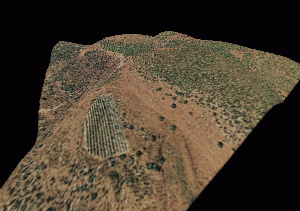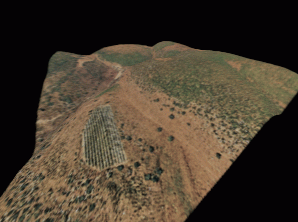Welcome to the visually pleasing world of Anti-Aliased Splatting
This work describes three new results for volume rendering algorithms utilizing
splatting. Firstly, an anti-aliasing extension to the basic splatting algorithm
is introduced that mitigates the spatial aliasing for high-resolution volumes.
Aliasing can be severe for high-resolution volumes, or volumes where a
high depth of field leads to converging samples along the perspective axis.
Anti-aliasing is achieved by prgressively increasing the size of the splatting
kernels, starting from a certain distance from the viewing plane. This
has a lowpassing effect for the volume portions that would otherwise be
rendered above their Nyquyist limit. Secondly, an analysis of the common
approximation errors in the splatting process for perspective viewing is
presented. In this context, we give different implementations, distinguished
by efficiency and accuracy, for adding the splat contributions to the image
plane. We then present new results in controlling the splatting errors
and also show their behavior in the framework of our new anti-aliasing
technique. Finally, current work in progress on extensions to splatting
for temporal aliasing will be demonstrated. Here, we present a simple,
but highly effective scheme for adding motion blur to fast moving volumes.
Want to know more about it?
-
The paper "Splatting
errors and antialiasing" was published in collaboration with T. Moeller,
J.E. Swan, R. Crawfis, N. Shareef, and R. Yagel in IEEE Transactions
on Visualization and Computer Graphics, vol. 3, no. 2, pp. 178-191,
1997.
-
An earlier paper titled "An
anti-aliasing technique for splatting" (image
page) as presented at the 1997 Visualization conference, pp.
197-204, where it won the Best Paper Award.
IMAGES:
Perspective view into a checker-boarded tunnel, using standard splatting
kernels:

Notice the strong aliasing behind the black square.
Perspective view into the same tunnel, but using the new adaptive splatting
kernels:

The strong aliasing has been smoothed out, as a function of depth.
Terrain perspectively viewed with standard splatting kernels:

Click
here for an aliased flight over this lovely terrain. Notice the crawling
ant effect in the regions further away from the viewpoint.
Terrain perspectively viewed with the new adaptive splatting kernels:

Click
here for a quicktime movie of the fly-over. Notice that the crawling
ant effect has been replaced by a slightly blurred and much more pleasing
appearance of the terrain, caused by the lowpassing of those volume regions.
Click
here
for a movie that shows the distance k , illustrated by
a black line, from which on the size of the splatting kernel is progressively
increased, i.e., lowpassing is performed. The volume regions in front of
the black line, towards the observer, are not lowpassed at all.
To Research
Homepage




